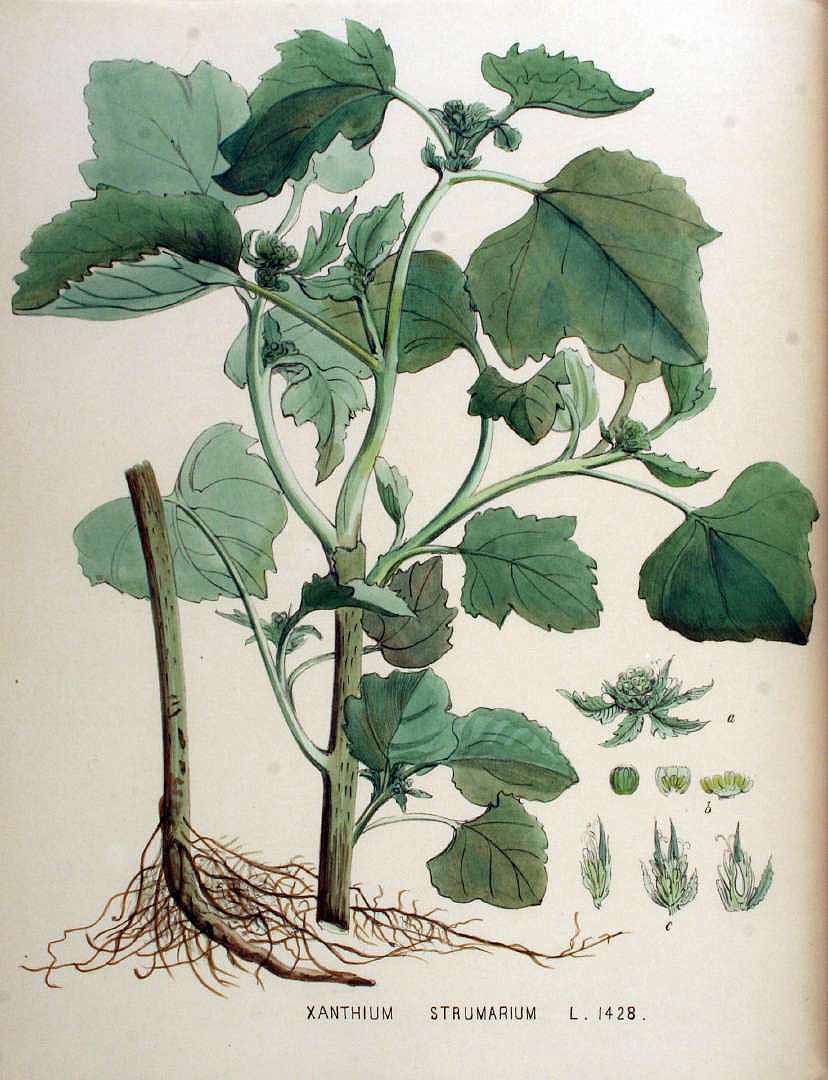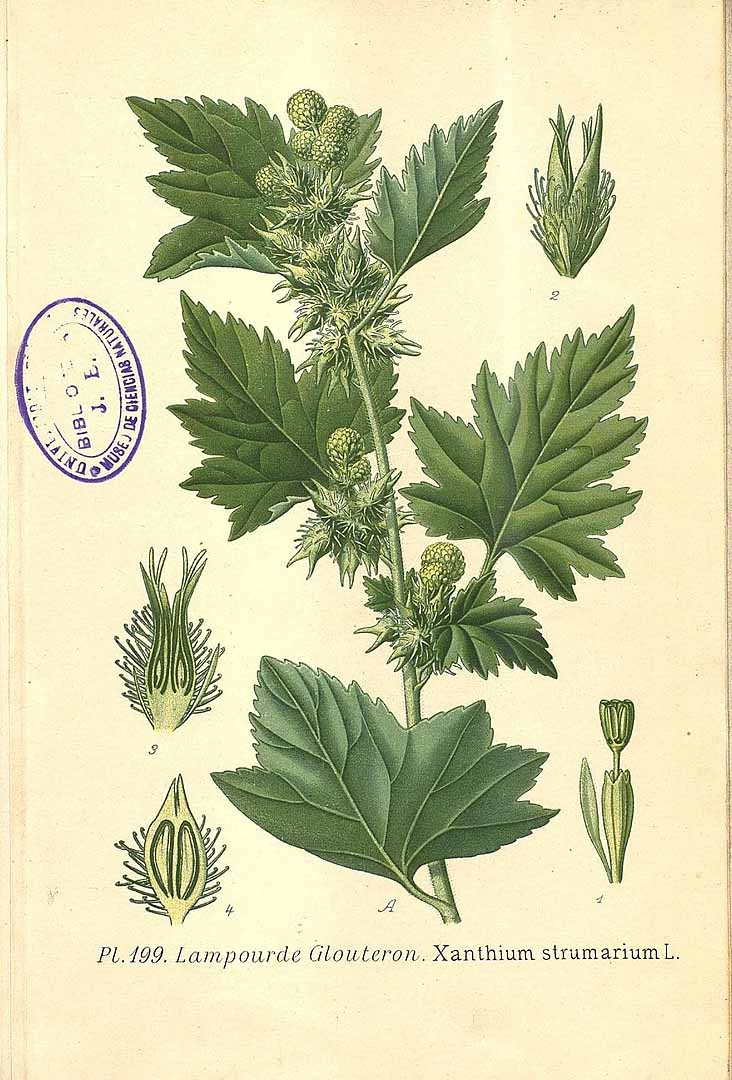! Nouveau site ici !
Vita > Plantae > Magnoliophyta > Magnoliopsida > Asterales >
Asteraceae > Xanthium
Xanthium strumarium


 | * - ***
| * - ***
Vita > Plantae > Magnoliophyta > Magnoliopsida > Asterales >
Asteraceae > Xanthium
Xanthium strumarium

Une plante herbacée annuelle à branches raides. Il mesure 1,2 m de haut. Les feuilles sont alternes et ovales ou triangulaires avec une base en forme de cœur. Les capitules sont verdâtres. Les fleurs mâles... (traduction automatique)
→suite
⬀
Le  donne accès au menu
donne accès au menu (c'est votre point de repère) 😊 ;
En dessous vous avez la classification, à partir de la vie (Vita, premier rang) jusqu'à la classe au dessus de la plante, dont vous trouvez ensuite le nom scientifique/botanique (latin) puis le nom commun (français), le cas échéant ;
C'est aussi un lien vers la fiche complète (tout comme la ✖, en bas à droite, et le +, en dessous de la description) ;
Vient alors l'illustration (ou ce qui la remplace, en attendant), la comestibilité :
Et en bas
⬂







